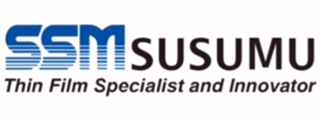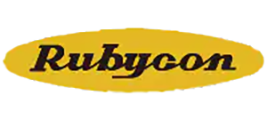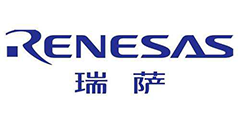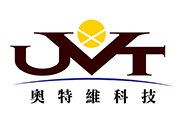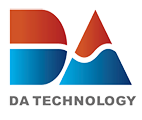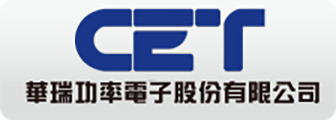- Ameya360 Component Supply Platform >
- Trade news >
- Paper or Plastic? Both Are in MEMS’ Future
Paper or Plastic? Both Are in MEMS’ Future
How do you accurately forecast the future of microelectromechanical system (MEMS) technology — the fastest growing semiconductor segment, according to global industry association SEMI? By tracing the devices’ history, then surveying the top 500 most innovative scholarly articles on MEMS, Alissa Fitzgerald, founder of MEMS design and development house A.M. Fitzgerald and Associates LLC, told an audience here at SEMI’s MEMS & Sensors Executive Congress.
“The next billion-dollar product is lurking in that university literature,” Fitzgerald said. The 2017 crop of academic papers reveals work on passive and near-zero-power sensors, as well as plastic- and paper-substrate alternatives to costly silicon for consumer and one-use, disposable specialty products.
A.M. Fitzgerald already has a bead on the future of MEMS, having worked to bring novel academic and entrepreneurial ideas to fruition at small MEMS fabs, such as Rogue Valley Microdevices, which uses both commercial silicon and SOI wafers from Soitec.
In her conference talk, Fitzgerald traced MEMS technology’s roots to the development of alkaline-etched 3-D force sensors of the 1980s, which led to Kurt Petersen’s invention of pressure sensors based on bulk-silicon-micromachining technology. The pressure sensors enabled inkjet nozzles, which led to digital light processing (DLP) MEMS and then to the first use of an accelerometer (from Analog Devices Inc.) to trigger airbags faster than old-school, ball-in-tube mechanical tripwires.
“From there, a whole new era began with Bosch’s DRI [deep-reactive ion etching] process, which enabled the world’s first MEMS gyroscope. FBARs [thin-film bulk acoustic resonators] and the wide use of MEMS piezoelectric and aluminum nitride films also enabled the wide range of MEMS devices we have today,” said Fitzgerald. Another important invention was “precision-aligned eutectic bonding, which enabled InvenSense to wafer bond MEMS chips with its own ASICs for automatic hermitic sealing, eliminating the need for an extra capping step.”
According to Fitzgerald, in the early days the major players, such as ADI and Bosch, fulfilled the needs of more than 50% of the market, leaving the 400 small companies to split up the leftovers. But with the popularization of the smartphone, a massive consumer market has grown those 400 little guys into the dominant position.
So where did all these consumer market ideas come from? Fitzgerald traces them largely to the academic community which “nurses them along in university labs” as solutions looking for a problem. A.M. Fitzgerald and others design and develop the academics’ ideas into marketable products that fuel the current worldwide trillion dollar consumer markets.
Looking ahead then boils down to finding out what the university labs are incubating, Fitzgerald said. “By scanning through the top 500 papers in 2017, which we filtered for commercial viability, we can predict the technologies that will be worldwide game changers.”
Future of MEMS
According to Fitzgerald, the first game changers will come from novel uses of FBAR and surface-acoustic-wave (SAW) sensors.
Today, FBAR and SAW technologies are mainly used for RF filters. “But the literature reveals that they can also be used for producing passive sensors that do not require a battery but can still wake up a processor when a certain parameter has been achieved,” Fitzgerald said. The sensors can provide highly accurate detection of temperature extremes but also can be functionalized for pressure limits and even the detection of specific gases.
“These passive sensors are perfect for harsh environments where you do not or cannot change batteries and yet provide high performance with zero standby power consumption,” she said.
A further look at the 2017 MEMS literature turned up near-zero-power devices, sometimes called “event driven” sensors. These are similar to passive devices but use very small, microamp power supplies providing less than 1 picowatt in standby mode. When they sense the signature of a specific event, they flip on to alert an application processor.
“For instance, Northeastern University has shown that near-zero power IR sensors can be made wavelength sensitive and can wake up a processor in an IoT [Internet of Things] device or security sentinel. Even when used in large arrays, they can nevertheless use small energy-harvesting techniques for their standby power source,” Fitzgerald said.
Other nouveau MEMS devices use piezoelectric materials not just for energy harvesting, as today, but also to enable applications such as wide-range microspeakers, magnetometers, and even transformers, none of which would require licensing Bosch’s effective but expensive DRI process.
“The consumer market is ripe for cheap devices and IoTs that are practically disposable by virtue of being scalable for mass production,” said Fitzgerald.
In that same vein, MEMS researchers are working with alternatives to expensive silicon. In 2004, Fitzgerald said, 90% of the world’s MEMS devices were fabricated with bulk silicon or on the surface of silicon substrates, but as many as half of the next-generation devices described in the literature would be built on plastic or even paper substrates. “Paper-based technologies are increasingly replacing expensive, billion-dollar silicon fabs, especially for disposable applications using sensors that cost less than a penny each,” she said. The resultant devices are not as fast or precise as silicon builds, but their performance suffices for ephemeral consumer products or single-use applications.
For example, paper sensors could be made that would detect specific types of bacteria. Such devices could reduce the need for broad-spectrum antibiotics, which are enabling the evolution of superbugs. Likewise, paper food packaging could embed paper-substrate devices that would tell the user whether an item has in fact spoiled, replacing today’s imprecise “use by” date stamps.
“In the 2020s, were are going to see a new range of piezoelectric event-driven sensors, and in the 2030s we will see important growth in paper- and plastic-based sensors,” said Fitzgerald.
Silicon will still be relevant for CMOS-plus-sensor designs with built-in readouts, she said. but “silicon technology is at risk of stagnation, as research efforts into using it are slowing down in favor of cheaper paper devices.”
Online messageinquiry
- Week of hot material
- Material in short supply seckilling
| model | brand | Quote |
|---|---|---|
| BD71847AMWV-E2 | ROHM Semiconductor | |
| TL431ACLPR | Texas Instruments | |
| CDZVT2R20B | ROHM Semiconductor | |
| MC33074DR2G | onsemi | |
| RB751G-40T2R | ROHM Semiconductor |
| model | brand | To snap up |
|---|---|---|
| BP3621 | ROHM Semiconductor | |
| ESR03EZPJ151 | ROHM Semiconductor | |
| BU33JA2MNVX-CTL | ROHM Semiconductor | |
| TPS63050YFFR | Texas Instruments | |
| STM32F429IGT6 | STMicroelectronics | |
| IPZ40N04S5L4R8ATMA1 | Infineon Technologies |
- Week of ranking
- Month ranking
Qr code of ameya360 official account
Identify TWO-DIMENSIONAL code, you can pay attention to


Please enter the verification code in the image below:



